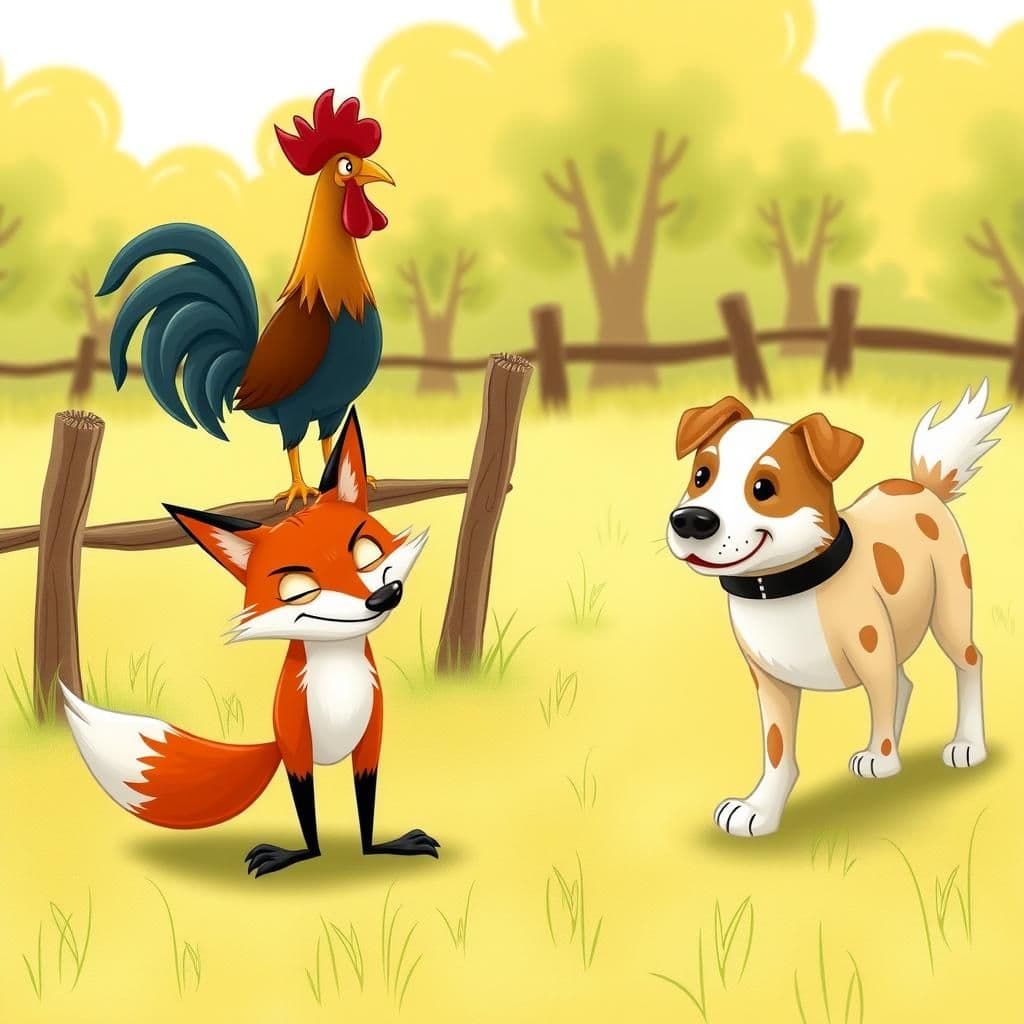The Eagle and the Kite

Story Summary
In the fable "The Eagle and the Kite," a sorrowful Eagle, in search of a suitable mate, is deceived by the Kite's boastful claims of strength and ability to catch prey. After their marriage, the Kite fails to deliver on his promise, bringing only a worthless mouse instead of the promised ostrich, revealing the moral of the story: deceit can lead to disappointment. This tale illustrates the essence of moral-based storytelling found in well-known moral stories and animal stories with moral lessons.
Click to reveal the moral of the story
The moral of the story is that one should be cautious of promises made by those who are not truly capable of fulfilling them, especially when motivated by personal gain.
Historical Context
This fable, likely originating from Aesop's collection in ancient Greece, reflects themes of deception and unfulfilled promises, common in many cultural narratives. The story illustrates the pitfalls of valuing strength over integrity in relationships, a motif that has been retold in various forms across cultures, emphasizing moral lessons about trust and expectations in partnerships.
Our Editors Opinion
This fable highlights the dangers of valuing empty promises and superficial qualities over genuine compatibility and character in relationships. In modern life, this moral resonates with the experience of individuals who may overlook red flags in a partner due to their charm or perceived strength, only to discover later that their actions do not align with their words. For instance, someone might be drawn to a partner who boasts about their wealth and success, only to find out that their lifestyle is built on deception and they cannot provide the support they claimed.
You May Also Like

The Fox the Cock and the Dog
In "The Fox the Cock and the Dog," a clever Fox tries to deceive a Cock with the news of a universal truce, claiming that all beasts will coexist peacefully. However, when the Cock mentions the approaching Dog, the Fox quickly retreats, illustrating how cunning can backfire. This classic fable, part of impactful moral stories, teaches that those who attempt to trick others may end up ensnared by their own deceit.

The Man and His Two Sweethearts
In this entertaining moral story, a middle-aged man courts two women—a younger one seeking youthfulness and an older one embarrassed by their age difference. Their attempts to modify his appearance lead to a comical outcome, as both women pull out all of his hair, leaving him completely bald. The tale serves as a simple moral story illustrating that trying to please everyone can ultimately result in losing everything.

The Eligible Son-in-Law
In "The Eligible Son-in-Law," a pious banker is approached by a shabby man seeking a loan of one hundred thousand dollars, claiming he will soon marry the banker's daughter, presenting this as the best security. The banker, unable to see the flaw in this scheme of mutual benefit, agrees to the loan, illustrating the themes often found in short moral tales that emphasize the importance of discernment and the potential pitfalls of blind trust. This folklore-like story serves as a motivational tale for personal growth, reminding readers to critically assess promises that seem too good to be true.
Other names for this story
Eagle's Dilemma, The Unfulfilled Promise, Love's Deception, The Kite's Folly, Soaring Expectations, Betrayed by Ambition, The Eagle's Choice, A Mate Misjudged
Did You Know?
This fable illustrates the theme of deceit and the consequences of making promises that one cannot keep, highlighting how appearances can be misleading when choosing a partner. The Eagle’s search for a worthy mate ends in disappointment, emphasizing the importance of integrity and reliability in relationships.
Subscribe to Daily Stories
Get a new moral story in your inbox every day.